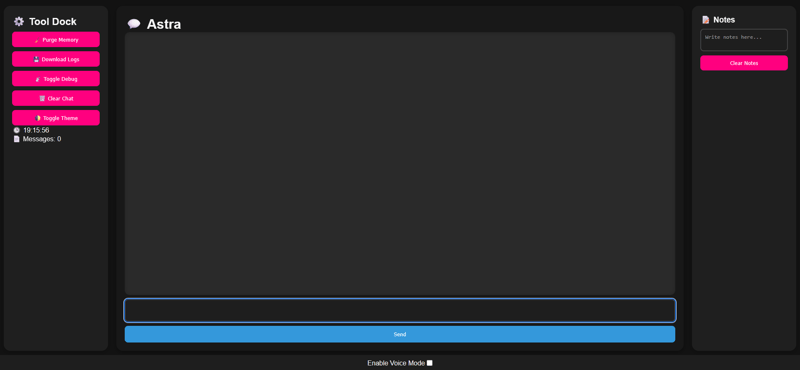# Understanding Zero Trust Security: A Developer's Guide
In today's evolving cybersecurity landscape, traditional security models based on perimeter defenses are no longer sufficient. The rise of cloud computing, remote work, and sophisticated cyber threats has necessitated a paradigm shift—enter Zero Trust Security. This model operates on the fundamental principle: "Never trust, always verify." What is Zero Trust Security? Zero Trust Security is an architecture that assumes no implicit trust for any user, device, or network, even those inside a traditionally secure perimeter. Instead, access to resources is granted based on continuous verification, least privilege principles, and strict enforcement of security policies. Core Principles of Zero Trust Verify Explicitly - Always authenticate and authorize based on all available data points (e.g., identity, device health, location, access patterns). Least Privilege Access - Grant the minimum permissions necessary for a user or application to perform its function. Assume Breach - Design systems with the assumption that threats exist inside and outside the network, implementing strong monitoring and segmentation. Micro-Segmentation - Divide networks into smaller segments to limit the lateral movement of threats. Multi-Factor Authentication (MFA) - Enforce strong authentication mechanisms for all access requests. Continuous Monitoring - Continuously analyze user behaviors, access logs, and application activities for anomalies. How Developers Can Implement Zero Trust Security As a developer, implementing Zero Trust Security in your applications involves integrating robust identity management, fine-grained access controls, and real-time threat detection. Below are some key approaches: 1. Identity and Access Management (IAM) Implement secure authentication and authorization mechanisms using standards like OAuth 2.0, OpenID Connect, and SAML. Example: Enforcing OAuth 2.0 Authentication in a Node.js App const express = require('express'); const { auth } = require('express-oauth2-jwt-bearer'); const app = express(); const checkJwt = auth({ audience: 'https://api.yourapp.com', issuerBaseURL: 'https://your-identity-provider.com/', }); app.get('/secure-endpoint', checkJwt, (req, res) => { res.json({ message: 'You have accessed a protected route!' }); }); app.listen(3000, () => console.log('Server running on port 3000')); This implementation ensures that only authenticated users with valid JWT tokens can access protected routes. 2. Enforcing Least Privilege Access Implement role-based access control (RBAC) or attribute-based access control (ABAC) to restrict access to resources. Example: RBAC in Python using Flask from flask import Flask, request, jsonify from flask_jwt_extended import JWTManager, jwt_required, get_jwt_identity app = Flask(__name__) app.config['JWT_SECRET_KEY'] = 'your-secret-key' jwt = JWTManager(app) roles = { "admin": ["read", "write", "delete"], "user": ["read"] } def check_permissions(user_role, action): return action in roles.get(user_role, []) @app.route('/data', methods=['GET', 'POST', 'DELETE']) @jwt_required() def secure_data(): user_role = get_jwt_identity().get("role") action = request.method.lower() if check_permissions(user_role, action): return jsonify({"message": f"{action.capitalize()} action allowed"}) else: return jsonify({"error": "Access denied"}), 403 if __name__ == '__main__': app.run(debug=True) In this example, users are restricted to actions based on their assigned roles. 3. Implementing Micro-Segmentation Micro-segmentation divides the application into secure zones to limit exposure in case of a breach. Using Kubernetes Network Policies, you can control communication between services: apiVersion: networking.k8s.io/v1 kind: NetworkPolicy metadata: name: deny-all namespace: default spec: podSelector: matchLabels: app: my-app policyTypes: - Ingress - Egress ingress: [] # Deny all incoming traffic egress: [] # Deny all outgoing traffic This policy ensures that pods labeled my-app cannot communicate with others unless explicitly allowed. 4. Implementing Continuous Monitoring Logging and anomaly detection help identify suspicious activities. Use tools like ELK Stack (Elasticsearch, Logstash, Kibana) or Prometheus + Grafana for real-time monitoring. Example: Logging unauthorized access attempts in a Node.js app const fs = require('fs'); function logUnauthorizedAccess(user, endpoint) { const logEntry = `${new Date().toISOString()} - Unauthorized access by ${user} to ${endpoint}\n`; fs.appendFileSync('security.log', logEntry); } Regularly analyzing logs helps detect and mitigate security breaches. Conclusion Zero Trust Security is a proactive approach to securing applications and data in an increasingly complex threat land

In today's evolving cybersecurity landscape, traditional security models based on perimeter defenses are no longer sufficient. The rise of cloud computing, remote work, and sophisticated cyber threats has necessitated a paradigm shift—enter Zero Trust Security. This model operates on the fundamental principle: "Never trust, always verify."
What is Zero Trust Security?
Zero Trust Security is an architecture that assumes no implicit trust for any user, device, or network, even those inside a traditionally secure perimeter. Instead, access to resources is granted based on continuous verification, least privilege principles, and strict enforcement of security policies.
Core Principles of Zero Trust
- Verify Explicitly - Always authenticate and authorize based on all available data points (e.g., identity, device health, location, access patterns).
- Least Privilege Access - Grant the minimum permissions necessary for a user or application to perform its function.
- Assume Breach - Design systems with the assumption that threats exist inside and outside the network, implementing strong monitoring and segmentation.
- Micro-Segmentation - Divide networks into smaller segments to limit the lateral movement of threats.
- Multi-Factor Authentication (MFA) - Enforce strong authentication mechanisms for all access requests.
- Continuous Monitoring - Continuously analyze user behaviors, access logs, and application activities for anomalies.
How Developers Can Implement Zero Trust Security
As a developer, implementing Zero Trust Security in your applications involves integrating robust identity management, fine-grained access controls, and real-time threat detection. Below are some key approaches:
1. Identity and Access Management (IAM)
Implement secure authentication and authorization mechanisms using standards like OAuth 2.0, OpenID Connect, and SAML.
Example: Enforcing OAuth 2.0 Authentication in a Node.js App
const express = require('express');
const { auth } = require('express-oauth2-jwt-bearer');
const app = express();
const checkJwt = auth({
audience: 'https://api.yourapp.com',
issuerBaseURL: 'https://your-identity-provider.com/',
});
app.get('/secure-endpoint', checkJwt, (req, res) => {
res.json({ message: 'You have accessed a protected route!' });
});
app.listen(3000, () => console.log('Server running on port 3000'));
This implementation ensures that only authenticated users with valid JWT tokens can access protected routes.
2. Enforcing Least Privilege Access
Implement role-based access control (RBAC) or attribute-based access control (ABAC) to restrict access to resources.
Example: RBAC in Python using Flask
from flask import Flask, request, jsonify
from flask_jwt_extended import JWTManager, jwt_required, get_jwt_identity
app = Flask(__name__)
app.config['JWT_SECRET_KEY'] = 'your-secret-key'
jwt = JWTManager(app)
roles = {
"admin": ["read", "write", "delete"],
"user": ["read"]
}
def check_permissions(user_role, action):
return action in roles.get(user_role, [])
@app.route('/data', methods=['GET', 'POST', 'DELETE'])
@jwt_required()
def secure_data():
user_role = get_jwt_identity().get("role")
action = request.method.lower()
if check_permissions(user_role, action):
return jsonify({"message": f"{action.capitalize()} action allowed"})
else:
return jsonify({"error": "Access denied"}), 403
if __name__ == '__main__':
app.run(debug=True)
In this example, users are restricted to actions based on their assigned roles.
3. Implementing Micro-Segmentation
Micro-segmentation divides the application into secure zones to limit exposure in case of a breach.
Using Kubernetes Network Policies, you can control communication between services:
apiVersion: networking.k8s.io/v1
kind: NetworkPolicy
metadata:
name: deny-all
namespace: default
spec:
podSelector:
matchLabels:
app: my-app
policyTypes:
- Ingress
- Egress
ingress: [] # Deny all incoming traffic
egress: [] # Deny all outgoing traffic
This policy ensures that pods labeled my-app cannot communicate with others unless explicitly allowed.
4. Implementing Continuous Monitoring
Logging and anomaly detection help identify suspicious activities. Use tools like ELK Stack (Elasticsearch, Logstash, Kibana) or Prometheus + Grafana for real-time monitoring.
Example: Logging unauthorized access attempts in a Node.js app
const fs = require('fs');
function logUnauthorizedAccess(user, endpoint) {
const logEntry = `${new Date().toISOString()} - Unauthorized access by ${user} to ${endpoint}\n`;
fs.appendFileSync('security.log', logEntry);
}
Regularly analyzing logs helps detect and mitigate security breaches.
Conclusion
Zero Trust Security is a proactive approach to securing applications and data in an increasingly complex threat landscape. By adopting identity-based access controls, least privilege principles, micro-segmentation, and continuous monitoring, developers can safeguard applications against potential attacks.
Start implementing Zero Trust in your projects today—because in cybersecurity, trust is a vulnerability!






















































.jpg)
%20Abstract%20Background%20112024%20SOURCE%20Amazon.jpg)



















































































































![[The AI Show Episode 142]: ChatGPT’s New Image Generator, Studio Ghibli Craze and Backlash, Gemini 2.5, OpenAI Academy, 4o Updates, Vibe Marketing & xAI Acquires X](https://www.marketingaiinstitute.com/hubfs/ep%20142%20cover.png)
































































































































![From drop-out to software architect with Jason Lengstorf [Podcast #167]](https://cdn.hashnode.com/res/hashnode/image/upload/v1743796461357/f3d19cd7-e6f5-4d7c-8bfc-eb974bc8da68.png?#)





































































































.png?#)





.jpg?#)
































_Christophe_Coat_Alamy.jpg?#)











































































































![Rapidus in Talks With Apple as It Accelerates Toward 2nm Chip Production [Report]](https://www.iclarified.com/images/news/96937/96937/96937-640.jpg)









































































































































